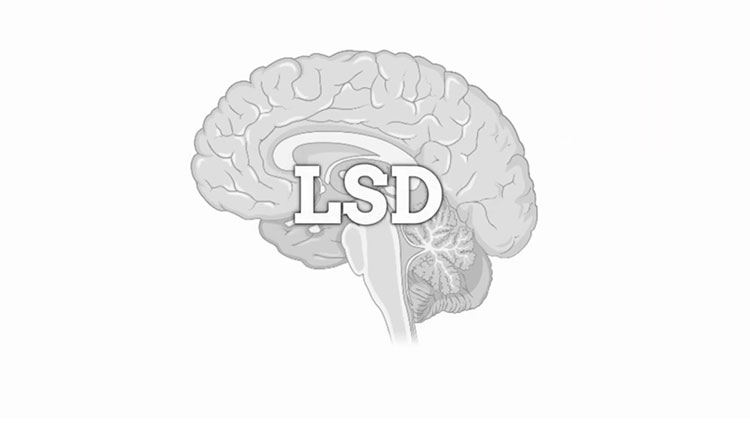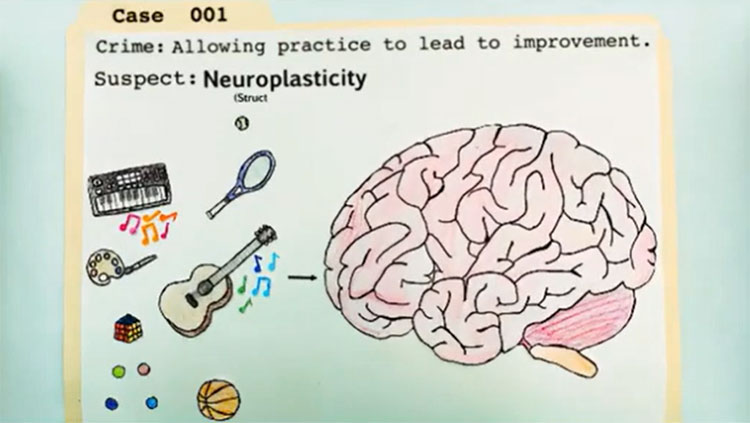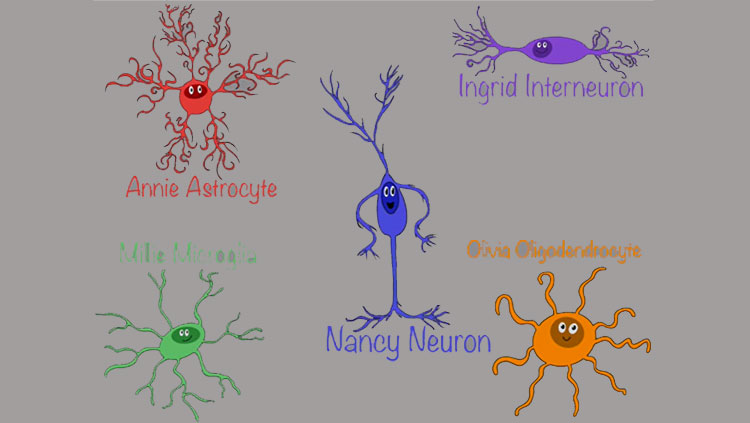“He slimed me!” Venkman spits out in disgust, writhing in sticky ectoplasm in a memorable scene from the 1984 movie Ghostbusters. Ectoplasm, the mysterious stuff of the supernatural world, also makes nerve axons twitch every time they fire, but almost nobody talks about it.
In their comprehensive book on biology, The Science of Life, by H. G. Wells and Julian S. Huxley, published in 1931, the authors devote an entire section to ectoplasm. Wells and Huxley consider the nature of ectoplasmic slime, the scientific evidence for life-beyond death, mediums communicating with the dead in séances, and other occult phenomena. These intellectual giants of their day did so because of the strong interest in ghostly aspects of the biology of life in the late 19th and early 20th centuries. This was a period when the biological basis of life was being discovered in the cytoplasm of cells. A similar substance, ectoplasm, might reasonably bring life back to departed spirits.
In their book they describe ectoplasm quite vividly without the advantage of special effects available in Ghostbusters:  “Usually but not necessarily, the exudation occurs by mouth and nose; it may sometimes come out of the head and neck, the ears, or from other orifices of the medium. It has a quantitative abundance like the foam of bottled beer when the beer is “up.” It may have as little substance. This ooze presently takes on forms and, it is asserted, organic structure also. . . Hands, feet, grotesque bestial forms and at last these crumpled paper-bag faces emerge from the accumulating stuff” (p. 1426).
Who ya gonna call?
“Usually but not necessarily, the exudation occurs by mouth and nose; it may sometimes come out of the head and neck, the ears, or from other orifices of the medium. It has a quantitative abundance like the foam of bottled beer when the beer is “up.” It may have as little substance. This ooze presently takes on forms and, it is asserted, organic structure also. . . Hands, feet, grotesque bestial forms and at last these crumpled paper-bag faces emerge from the accumulating stuff” (p. 1426).
Who ya gonna call?

Well, if you are scientifically minded you will turn to an authoritative source, such as the widely respected journal Nature.
Quoting from Dr. R. J. Tillyard’s 1928 paper in Nature, “Evidence of Survival of a Human Personality,” “I feel that a scientific proof of survival [of the spirit beyond death] has at last been obtained.”
Tillyard had attended a number of séances, and came away absolutely convinced that the dead can communicate with the living through a sensitive medium. In his Nature paper Tillyard describes one medium, Mrs. Crandon, who was able to communicate with her long departed brother, Walter Stinson, who was killed in a railway accident in 1912. Tillyard presents the experimental data he obtained during these séances in his Nature paper and concludes definitively: “My own conclusion is that Walter Stinson, who died in 1912, has fully proved in a scientific manner his claim that his personality has survived his physical death.
Consider, for example, data in Figure 1 of that paper:

There are five more figures with equally compelling data in this Nature paper. Wells and Huxley state that a scientist must never use the word “impossible.” “Highly improbable,” is the appropriate term to use, they insist. [Best said with a British accent.] “We do not hesitate to find Walter “highly improbable,” they conclude at the end of the ectoplasm chapter in their book. Still, a bump in the night or an object suddenly moving on its own is clear evidence of ghosts for many believers. When axons go bump in the night I distinctly remember peering through a microscope in a dark room in my lab, examining the axon of a neuron I had grown in cell culture. I flipped a switch on an electrophysiological stimulator to make the axon fire action potentials, and. . . the axon twitched! It was freaky.
I stimulated it again and the axon twitched again. I checked carefully for any possible vibration or mechanical explanation that could bump the axon when I stimulated it, but I could find none. Then I remembered a rather obscure line of research on the physical phenomena that accompany action potential firing. One of the pioneers in the field was Ichiji Tasaki, who was still working in his lab at the NIH seven days a week even though he was in his late nineties. Tasaki had discovered the surprising way that action potentials actually work to send signals down nerve fibers of vertebrate animals, called saltatory conduction.
I visited him in his lab to ask if my twitching axons might be possessed, or more likely, they might be moving as he had described in many of his papers. Tasaki patiently explained that axons do twitch when they fire. That he had shown this decades ago, and he proceeded to write out a swarm of mathematical equations explaining the phenomenon. We know that the electrical impulse is generated in an axon by the movement of charged ions across the cell membrane. If you consider this process from the standpoint of pure physics, movement requires work, and the energy expended in work is associated with a change in temperature, and when ions enter and leave cells, water molecules also get carried along and the charged ions interact with proteins in the cytoplasm making them shrink or swell.
The consequence of this molecular movement of ions during an action potential is that the axon membrane resonates like a bloated water balloon thunked with a fingernail. Only, the amount of ions moving across the membrane during an action potential is very small. If you calculate the tiny temperature change that would occur and the minute rippling of the axon membrane that would accompany the ion movements, the changes are miniscule. However, if you are cleaver and determined, as the late Tasaki was, you can design and build instruments sensitive enough to detect the miniscule changes in temperature, physical displacement of the axon, and optical changes in the membrane that accompany the action potential firing. You can see movies of the optical changes and axon twitching that I saw in my lab in my paper published in the journal Science Signaling.
Although these physical changes that accompany the electrical events in neurons are quite imperceptible to us, on a molecular or submicroscopic scale, the physical effects would be a Tsunami. These physical effects likely do have biological consequences, but we tend not to study them. My postdoctoral fellow Yingchun Ni and I showed, for example, that axon swelling opens ion channels to relieve the osmotic pressure on the cell, and that these channels allow neurotransmitters to pass out of the axon. Normally we think of neurotransmitters being released at synapses, but in fact neurotransmitters can be released widely over the axon and cell body by this mechanism. This non-synaptic neurotransmission allows a much more diverse and larger range of cellular interactions.
There is not space to describe the physical changes accompanying action potentials in detail, but I refer you to Tasaki’s 1999 review article for details. Of particular importance in the rapid swelling and rapid recovery of the axon during a single action potential are the interactions of calcium and sodium ions with the specialized cytoplasm that lines the inner surface of the axon membrane. This microscopic layer, which makes nerves twitch, is called "ectoplasm."
References
Fields, R.D. (2012) Signaling by neuronal swelling. Science Signaling 4: tr1. http://www.ncbi.nlm.nih.gov/pmc/articles/PMC3201844/
Fields, R.D. and Ni, Y. (2010) Non-synaptic communication via ATP release from volume-regulated anion channels in axons. Science Signaling 3: ra73. http://stke.sciencemag.org/content/3/142/ra73
Tasaki, I (1999) Rapid structural changes in nerve fibers and cells associated with their excitation processes. Japanese Journal of Physiology 49: 125-138.
Tillyard, R.J. (1928) Evidence of Survival of a Human Personality, Nature August 18, Vol. 122: 243-246.


















